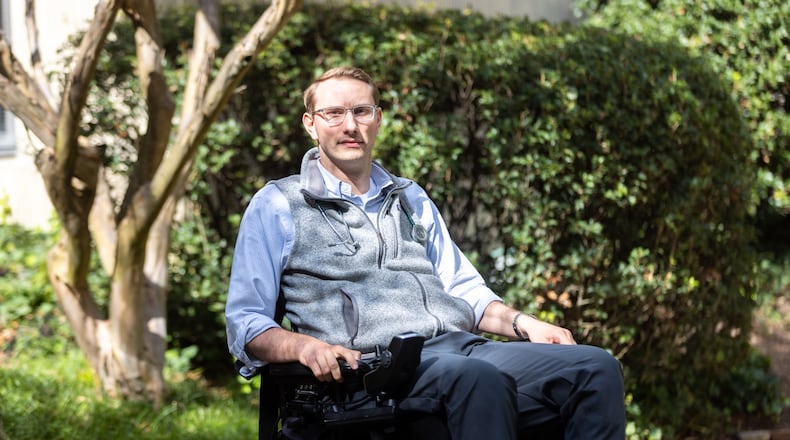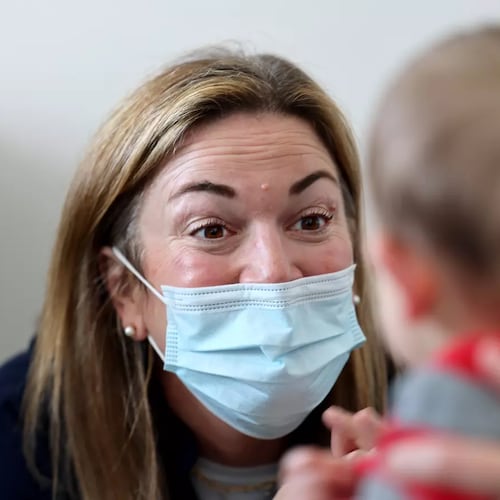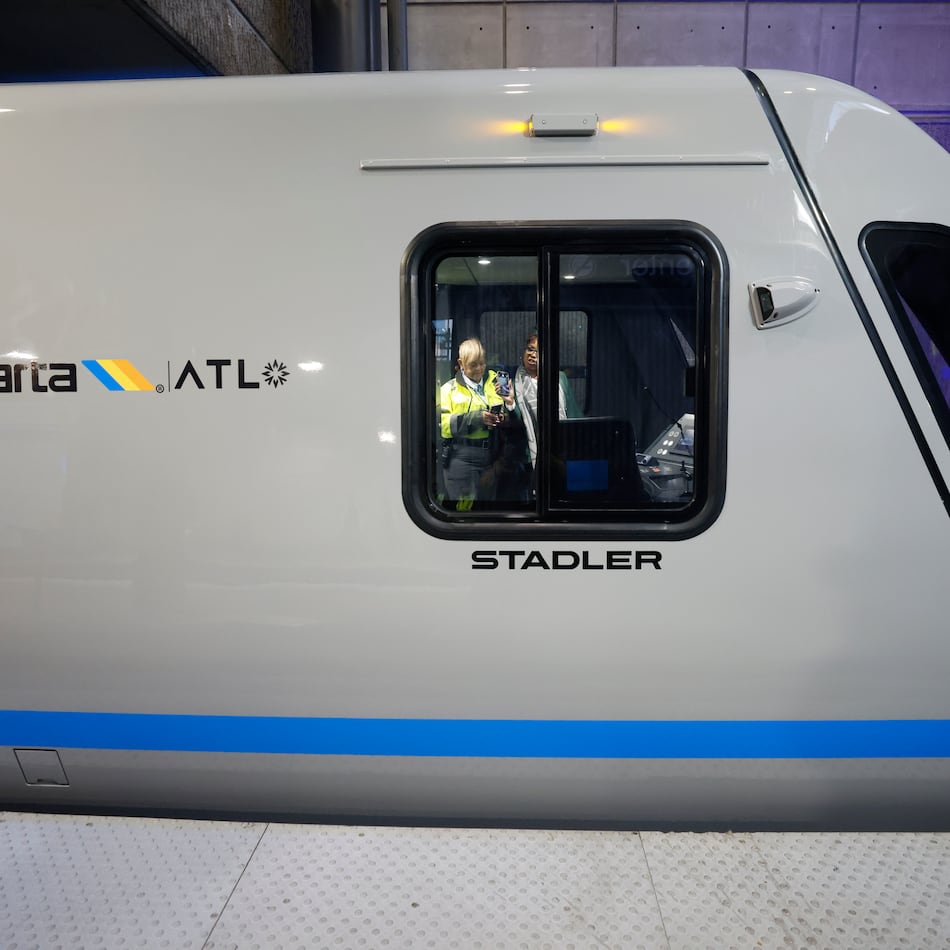Woody Morgan was whisked into Shepherd Center with two fractured vertebrae in the spring of 2008. Life-flighted from Florida, he was unable to move any of his limbs.
Still, this much the 20-year-old Atlantan was convinced of: When the time came for him to leave the center, no matter how long it took, he would walk out on his own.
The 6-foot-5 University of Georgia student believed his body would fully recover from the injuries he suffered in a diving accident, just as it had from other sports-related mishaps.
When that didn’t happen, Morgan found himself at one of those proverbial forks in the road. He could let his paralysis steal his hopes for a happy life and a successful career in medicine. Or he could claw his way out of despair and keep pursuing his dreams.
Morgan chose the latter.
In August, Morgan, now 35, returned to Atlanta’s highly regarded Shepherd Center — this time as a doctor, leading the facility’s comprehensive rehabilitation unit.
It’s a noteworthy feat on many levels, but especially considering this: An astonishingly small percentage of doctors — about 3% — have a disability. Only about 1% of them have a mobility disability. Many — if not most — of those became disabled after completing the grueling training marathon required to become a doctor. Just a tiny number of people with disabilities are accepted into medical school.
“He was very driven and wasn’t going to let anything get in the way,” said Dr. John Lin, one of Morgan’s doctors at Shepherd 15 years ago and now a colleague.
James Howard met Morgan when they were both patients in physical therapy. Every day, they spent hours together in a sprawling room with exercise balls, mats, stationary bicycles and other equipment to help patients gain strength and independence.
“With an injury like this, it can go one of two ways,” said Howard, then an Army Ranger who was eight years older than Morgan. “You can just be like a hermit and close up in your home, not have the resources and just look at all of the negatives that come with this injury. Or you can focus on the things you do have and be positive, and that’s what he did.”
Credit: arvin.temkar@ajc.com
Credit: arvin.temkar@ajc.com
‘One in a million’
It had been snowing in Athens when Morgan and friends embarked on their spring break getaway during his sophomore year at UGA. The long trip to Florida was stretched even more by a couple of misadventures. The car broke down. Then, in a small town along the way, they got caught in a speed trap.
Credit: cust
Credit: cust
After finally arriving in Destin, Morgan and his friends woke up the next day and eagerly headed to an expanse of white sandy beach. It was warm and sunny. Morgan waded into the ocean and handed his sunglasses to a friend. He dove into the crest of an oncoming wave – just like he had hundreds of times before at that very same beach.
But this time, something went horribly wrong. Morgan thinks he might have hit his head on a sandbar.
His friends pulled him from the ocean. A fellow beach-goer performed CPR. The next thing Morgan remembers is waking up in a hospital. He had suffered a catastrophic spinal cord injury, paralyzing him from the chest down.
After a week-long stay at the Florida hospital, Morgan was flown in an air ambulance to Shepherd Center.
The private, not-for-profit rehabilitation center specializes in research and the treatment of people with spinal cord and brain injuries, as well as other neuromuscular conditions. Patients from across the country seek treatment there. Morgan’s fourth-floor room faced bustling Peachtree Road in Buckhead, only a few miles from the house where he grew up.
“There were some dark days,” he said, recalling his sudden incapacitation. “I knew it would get better. But what would better look like?”
With spinal cord injuries, the effects and severity are often not clear at first.
The spinal cord is a bundle of nerves that carries messages between the brain and the rest of the body for movement and sensation. The location of the injury on the spinal cord determines what part of the body is affected and how debilitating it is. The spine itself is divided into four sections — the top portion, in the neck and referred to as cervical, is made up of seven vertebrae, C-1 to C-7. Cervical spinal cord injuries are typically the most severe.
“He was very driven and wasn't going to let anything get in the way."
Morgan experienced an “incomplete” C5-C6 spinal cord injury, which means he retained some very limited feeling and function in his extremities.
Dr. Herndon Murray, a physician at Shepherd Center since it opened in 1975, felt confident Morgan was where he needed to be to get stronger, both physically and emotionally.
Morgan also knew right away that he had landed in the right place.
“Everyone has a gung-ho and ‘Yes, you can’ attitude,” he said. “They never let you say the phrase, ‘I can’t do it.’ My therapists would always turn that into, ‘I can’t do it yet.’”
But, as positive as Murray was, he also had to be honest with his patient.
“We never ever say, ‘You’ll never walk again.’ We say, ‘It’s a very serious injury and, hopefully, there will be some recovery. But we have to be ready in case there isn’t,’” Murray said.
Morgan experienced deep lows and every now and then had to give in to the emotional pain.
“Sometimes, you have to let the tears flow and let the emotions go,” he said. “I would get stronger physically and mentally, but parts of my body remained paralyzed. It was difficult to reconcile the idea that my body, which had healed and recovered so many times before, would not do the same this time.”
So, Morgan tried to focus on one day, one task at a time.
When he first arrived at Shepherd, he was so weak he could barely sit up in bed. He couldn’t feed himself. He struggled to even scratch his nose. He needed to get his strength up to even start rehab.
“I couldn’t stretch my arms behind my back because my muscles were so tight. It was painful to move around. The first part is just getting out of bed and kind of getting your body ready to participate in therapy and not even think about the functional gains and goals.”
He learned to use a power chair, then a manual one. He worked on being able to push longer distances while also working on basic tasks, such as brushing his teeth and using voice-activated technology.
His mother, Nell Wilson, was by his side seven days a week, starting at 5 a.m. and staying until he fell asleep around midnight.
Credit: custom
Credit: custom
Morgan was relentless in his push to get a little better — even 1% better — every day. Howard, the former Ranger, said he was inspired by his companion’s drive. “I remember seeing him holding a fork and eating with a fork, and I was like, ‘I need to start doing this. I need to get to the point of being more independent.’ He set an example for a lot of people.”
Howard and Morgan often talked about the future. Morgan told his friend that he still wanted to be a doctor. One of Shepherd Center’s doctors — John Lin — was using a wheelchair. That gave Morgan hope that practicing medicine was still possible, even if Lin’s injury level was less severe.
Howard was polite but skeptical when Morgan talked about a career in medicine. The odds of that happening, he thought, were “like one in a million.”
“I never told him that. I just told him it was a great goal,” said Howard. “But I also remember thinking if anyone was going to be the one in a million, it would probably be Woody.”
The first step would be returning to UGA as soon as possible. Eager to rejoin his friends for parties and football games and to continue on his rigorous pre-medical school track, Morgan went back to school in the fall of 2008 — just five months after the traumatic injury.
‘As normal as possible’
Morgan, a gregarious student with dark blond hair and pale blue eyes, had always made friends easily. Wesley Troyer met Morgan their freshman year, and they bonded over soccer, UGA football and their demanding schedule of biology and chemistry classes.
“With his friendly nature, we would joke we’d need to go early to class because we would be in an auditorium, with like 300 people, and Woody would stop seven or eight times on his way to his seat to say ‘hi’ to people,” Troyer said. “People knew Woody. They were drawn to him.”
Credit: custom
Credit: custom
Troyer, Morgan and other friends moved into a handicapped-accessible apartment.
Morgan had always been active, playing intramural soccer, and going out. Even with his injuries, he kept up his social life but stayed laser-focused on school.
He typically woke up at about an hour and a half before some of his other roommates to prepare for his day. He had a morning stretching routine and physical therapy exercises. Then, with help, he got dressed and made breakfast. He meticulously plotted out the best paths to his classrooms.
Spontaneity was a thing of the past. “Someone invites us over to a party. It’s no longer, ‘Let’s go,’” said Troyer. “He has to make sure everything’s ready. Is it a downstairs apartment?
“From a friend standpoint, we were like, ‘If he’s going to put in all of the dedication to go back to normal, we need to make it as normal as possible.’ If it was an upstairs apartment, we have three guys who are going to carry him up the stairs in a manual chair.”
Morgan no longer sat in the student section at the football stadium, but the handicap-accessible area happened to be situated right in front of it.
“But what’s funny — and in true Woody-like fashion — is it was the fun place to be for all our friends, to the point of we had friends who snuck in to hang out with Woody, and some got kicked out the handicap-accessible section,” said Troyer, who is now a doctor specializing in sports medicine.
“I just told him it was a great goal. But I also remember thinking if anyone was going to be the one in a million, it would probably be Woody."
Morgan’s mom had moved to Athens so she could be close by to assist him. She helped him get dressed, bathed, to bed — and multiple tasks in-between. She helped him get to and from classes and to and from parties. She cooked for him every day.
His father, Dr. Randy Morgan, an anesthesiologist, visited on the weekends. A couple of nursing students also lent a hand.
Morgan switched to a power wheelchair because it gave him more independence. He worked to develop limited typing skills on a computer. College life also forced him to improve his strength and balance even more, such as when he was alone and needed to take off his backpack or to carry cafeteria meals while driving his chair or lean over to pick up things he dropped.
“You’re like, ‘Well, this happened and I don’t have anyone to help me, so I can either ask somebody or I can just try to do it on my own,’” Morgan said.
Credit: Justin Knight
Credit: Justin Knight
Making it work
Medical school is arduous: long hours, steep learning curves.
Students with disabilities face additional layers of challenges. Some medical schools have physical requirements, such as the student must be able to lift a patient or perform CPR.
But there’s been a rethinking of some of those demands that have long prevented people with disabilities from entering the medical profession. In 2021, the American Medical Association urged faculty at medical schools to become advocates for accommodations that allow disabled people to complete training.
But that updated guidance came well after Morgan had finished medical school.
Credit: custo
Credit: custo
Barbara S. Beckman, retired associate dean of admissions for Tulane University School of Medicine in New Orleans, one of the country’s most competitive programs, said she didn’t realize Morgan was paralyzed until it was time for the med school interview. Then, she said, he “rolled into my office in his wheelchair.”
Morgan was “everything you’d want in a candidate,” said Dr. Marc J. Kahn, former senior associate dean for admissions and student affairs. But not everyone was initially on board, he said. One person in the administration had concerns about whether Morgan could meet all of med school’s technical standards, which involve a wide range of abilities and characteristics, including motor function.
Those who supported Morgan’s candidacy prevailed, and he became Tulane’s first paralyzed medical student who required full-time use of a wheelchair. Three months into Morgan’s medical school career, the administrator apologized, saying all worries had been assuaged, Kahn said.
In a text message, Beckman wrote: “We have had so many incredible students, but Woody, through his quiet leadership and kindness, was embraced by all.”
Morgan praised Tulane for being open-minded and figuring out how to make it work.
He graduated with honors from Tulane. On Match Day, the day when students learn which residency program accepted them, fellow classmates erupted in cheers when his destination was announced: Boston’s Spaulding Rehabilitation Hospital, a Harvard Medical School teaching partner.
Morgan completed his residency training in physical medicine and rehabilitation, which was then followed by a fellowship in spinal cord injury medicine at the University of Colorado School of Medicine and Craig Hospital.
Credit: arvin.temkar@ajc.com
Credit: arvin.temkar@ajc.com
A glimmer of hope
On a recent afternoon, at the Shepherd Center, Morgan, wearing a gray fleece vest and a stethoscope around his neck, checks on patients in a large therapy room. In his wheelchair, he sometimes gets mistaken for a patient. But, for him, that’s not necessarily a bad thing.
Morgan treats newly injured patients, which starts with a physical and cognitive assessment and includes lab work and imaging. He works with a team of therapists to help a patient achieve the highest level of function and independence possible. Most importantly, he shows a full life is possible. With a specially outfitted minivan, he can drive again. He regularly spends time with family and friends. He goes to live concerts and Georgia football games.
Credit: Arvin Temkar/AJC
Credit: Arvin Temkar/AJC
One of his patients, 65-year-old Lucky Hardy, was learning to use a power chair for the first time that day.
“The first thing I picked up is he is real smart,” said Hardy, a Tennessee resident who dove into his backyard pool and hit his head, causing a traumatic blow to his spine. “I didn’t know when I got here my doctor would be in a wheelchair. I just knew I was going to see Dr. Morgan. But I felt a connection like maybe he can feel my pain. He knows what I am going through.”
Morgan definitely could empathize with Hardy. He understood on a personal level the muscle spasms and tightness his patient felt.
And, just as importantly, he deeply understood the emotional toll of the injury.
Morgan recently got a text from a patient he treated years ago during his residency in Boston. The patient was paralyzed in a diving accident. Morgan spent extra time with the young man, and they bonded.
The former patient said he was doing well and had just landed a job as a financial analyst. He wanted to tell Morgan how much of an impression he had made as a young doctor-in-training who had refused to give up on his dreams.
“I hope that my story and example can be, at least a little bit, a glimmer of hope, especially in those early dark days,” Morgan said. “It does get better, and there is a lot of life to live after an injury. Your life doesn’t end when you have a devastating injury. It changes, but it does not end.”
About the Author
Keep Reading
The Latest
Featured











